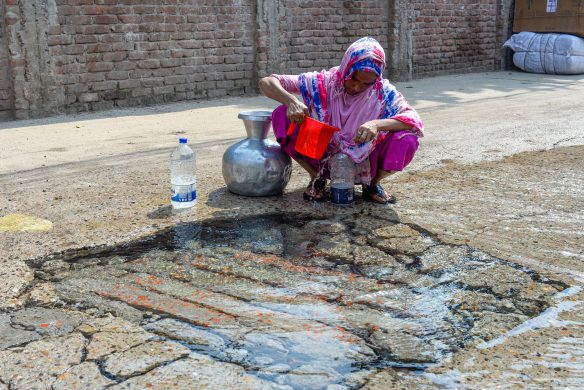The scale of toxic chemical waste from unused and obsolete pesticides in Latin America is far bigger than previously estimated, FAO (FNs Fødevare- og Landbrugsorganisation) said Monday.
– Previous FAO estimates, based on information provided by countries, suggested a total of about 10.000 tonnes of chemicals requiring disposal in the region, said Mark Davis, coordinator of FAOs obsolete (forældede) pesticides programme.
– Since that time a more frightening picture has begun to emerge indicating that stocks are far higher and are currently estimated to be between 30.000 and 50.000 tonnes, he added.
The search continues
In Northern Colombia, around 200 tonnes of the most toxic pesticides were discovered in a single site in El Copey/Cesar Region. Around 170.000 litres of highly hazardous methyl parathion (plantegift) and 10.000 litres of the persistent organic pollutant toxaphene were found. FAO has supported the government in surveying the site and chemicals were repackaged and destroyed.
In addition, the Colombian authorities have discovered a site where an estimated 5.000 tonnes of pesticides have been buried at a location where some displaced families have settled and where housing construction is planned.
In Paraguay, urgent efforts are being made to remove 125 tonnes of pesticides and heavily contaminated material that were damaged by fire in the capital, Asunción, in July 2003.
Efforts to extinguish the fire led to heavy contamination of the nearby Paraguay River, which flows into Argentina and ultimately into the Atlantic Ocean, as well as an adjacent village where people are now showing various symptoms of chronic intoxication (forgiftning).
FAO is assisting Paraguay in quantifying obsolete pesticide stocks in other parts of the country. Funds of approximately 3 million US dollar will be needed to remove and destroy this toxic waste before further harm is caused to people and the environment.
In Bolivia, old stocks of donated arsenic-based pesticides and cocktails of volatile fumigants were found in residential areas and close to important water bodies, including Lake Titicaca.
Bolivia, one of the poorest countries in the region, has made efforts to take stock and safely secure these toxins by repackaging the waste with the support of FAO. But still Bolivia needs 3 million US dollar to remove the chemicals and put in place measures to strengthen chemical management.
Training
FAO has organized a regional training programme for nine South American countries. Government regulators, emergency service staff, industry representatives and NGOs learned how to safely and effectively complete a detailed inventory and environmental risk assessment of obsolete pesticides, and how to design and supervise a cleanup operation.
However, the FAO Obsolete Pesticides Programme has no further funds to support such work in the Latin America region, Davis said. The Organization is therefore now calling for donor funding to build capacity in the region and to ensure that it complies with the highest international standards.
Obsolete pesticides are left over from pest control campaigns in cotton and other cash-crop production. Stockpiles have accumulated because a number of products have been banned for health or environmental reasons, but were never removed and disposed of. Deteriorated stocks often contaminate the environment and put people at risk.
Kilde: www.fao.org















